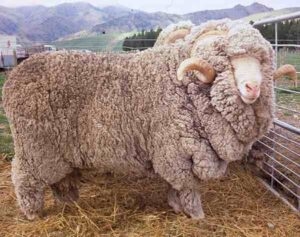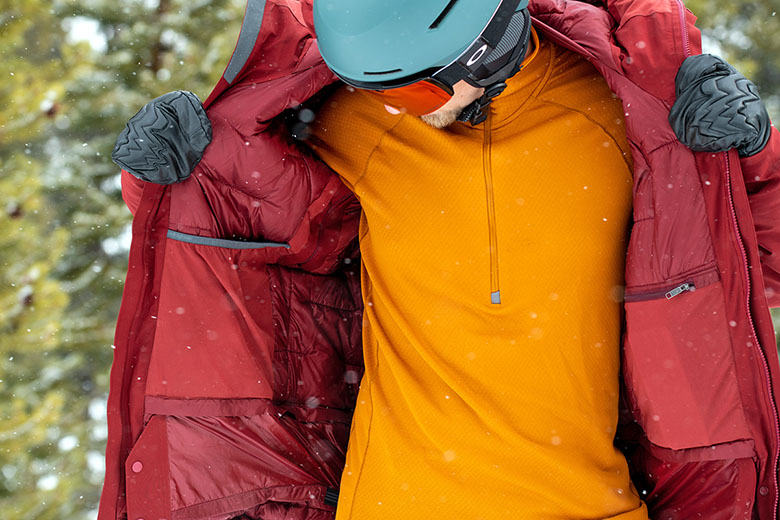FrankJScott
#¤anarchiste+AnTi SarKo=SERIAL POSTEUR¤#

Inscrit le: 25 Aoû 2022
Messages: 1488
Localisation: Forex Trading
|
 Posté le: Lun Fév 20, 2023 6:10 pm Sujet du message: Great Hints For Picking Base Layers For Skiing Posté le: Lun Fév 20, 2023 6:10 pm Sujet du message: Great Hints For Picking Base Layers For Skiing |
 |
|
What Merino Sheep Breeds Exist What Distinguishes Them In Their Distinct Features And Traits?
There are numerous Merino breeds that are available each with their distinct characteristics. Here are a few of the most common Merino breeds, and how they differ. Spanish Merino- The Spanish Merino is among the oldest breeds of Merino sheep, and is renowned for its high-quality wool and high yield. This breed is adaptable to a variety of conditions and also is highly resistant to diseases.
American Merino- The American Merino was first developed in the United States in the 19th century, and is renowned for its high-quality wool and hardiness. The breed is well-suited to cold weather and resists numerous common sheep diseases.
Saxon Merino- The Saxon Merino is a very delicate-boned breed of Merino sheep, which is renowned for its extremely silky and soft wool. This Merino breed is typically smaller than other Merino and is well-suited for dry and hot environments.
Peppin Merino - The Peppin Merino was an Australian breed that was developed in the 19th century. The breed is well-known for its fine wool quality and it is ideal for Australia's extreme heat and dry climate.
Rambouillet - Rambouillet is one of the Merino sheep breed, was developed in France in the 18th century. This breed is well-known for its adaptability and hardiness to a variety of environments. Rambouillet wool is often heavier and more costly than other Merino varieties, however its high-end quality is sought-after.
Polwarth - The Polwarth Merino breed was created in Australia in the latter half of the 19th century. This breed is well-suited to the wetter and cooler conditions of southern Australia because of its soft, lustrous wool.
The unique traits and traits of Merino sheep are determined by the specific breed and the setting in which they're raised. Breeders frequently select Merino breeds because of their unique qualities, including the ability to withstand harsh conditions, fine wool, adaptability, and ability to adapt. This allows them to develop Merino breeds that are able to work in a variety of environments and are more suited to specific requirements.

What Is The Difference Between 3/4-Length, Long-Sleeved, Hooded, Zip-Neck And Zip Merino Wool Base Layers?
The numerous Merino wool base layers are available in a variety of lengths, such as 3/4, long sleeves, hooded and zip-neck. Each one has distinct features and advantages. Here is a breakdown of all four types of base layer. How do you choose the best 3/4-length Merino wool base layer. The base layer is worn underneath shorts or under pants and is suitable for moderate to cool weather. They can be used for activities that require extra warmth but don't need long-lasting ones.
Long Sleeve Merino wool base layers are designed to bring warmth and ease to the upper body. They are available in different weights and are an excellent choice for cooler weather conditions. For sports with low or moderate intensity, the long sleeves as base layers are ideal.
Hooded Merino wool base layers are made to offer warmth and shielding from the elements. They often have the option of a hood that is fitted and padded which can be worn in conjunction with helmets. Hooded base layers are the perfect choice for those activities where you're exposed to wind or cold.
Zip-neck Merino wool base layers made from Merino wool are ideal for controlling temperature and airflow. They usually feature a collar with a zipper that can be pulled either up or down depending on the conditions. It is possible to use zip-neck base layers to perform activities like intense sports that require you to rapidly regulate your body temperature.
When choosing the right Merino base layer for you, be aware of the conditions of the weather, the intensity and nature of your pursuits, as well as personal preferences. 3/4 length base layers will be suitable for temperatures between mild and cool and long sleeves are suitable for colder weather. Hooded bases layers can protect you from cold or windy conditions. Zip-neck base layers in activities that require quick temperature control. Be sure that the base layer is snug and allows you to move about freely. Go find men's ski clothing at koraoutdoor.com for blog tips as well as mens big and tall thermal shirts, meriwool base layers, heated thermals for men, colored long johns, men's ski base layer pants, one piece insulated underwear, mens tall merino wool base layer, smartwool womens 250 base layer, icebreaker merino bodyfit 200 base layer, lightweight thermal pants, with more- Good Advice For Deciding On Ski Mid Layers 123aed7 and Best Facts For Choosing Merino Wool Base Layers.

What Is The Best Ski Mid Layer Clothing Combination With Regard To Merino Wool And The Himalayan Yak Wool
It's contingent on the weather and your personal preferences which combination of Merino wool or Himalayan Yak wool is best for ski mid-layers. Here are a few options to consider Merino Wool base layer and Himalayan Jak wool as a midlayer. This combination is great in colder weather where warmth is the most important factor. The Merino base layer and Himalayan wool mid-layer offer excellent control of moisture and regulate temperature. This will allow for additional insulation as well as warmth.
Middle-layer of Merino wool and Himalayan Yok wool as the middle layer. This combo makes for the ideal choice for weather conditions , when you might require changing layers throughout the day. Merino Wool's mid-layer provides warmth, moisture management as well as the Himalayan Jak Wool mid-layer will provide an additional layer of insulation in case you need it.
Merino wool base layer, Merino wool mid-layer, and Himalayan mid-layer of yak wool This combination is a good option for cold weather conditions or for people who are more susceptible to the cold. The Merino base layer is a great source of humidity management and temperature control. In addition, the Merino mid-layer adds warmth and water management, the Merino layer will keep your body warm. The Himalayan Himalayanyak wool mid-layer can provide insulation and warmth.
Layering can be a personal preference. That means that the best layering combination for you will differ depending on your body type and level , as well as the weather conditions. For optimal mobility and comfort while skiing, layers should be well-fitted and provide full movement. Go try koraoutdoor.com for men's ski clothing for blog examples as well as big and tall long underwear, wool one piece base layer, meriwool women's base layer, wedze bl100, old navy thermal knit long sleeve, womens long underwear skiing, long sleeve polo thermal, merino 400 base layer, crane merino base layer, indera long johns, with more- [url=https://dooboardthai.com/index.php?topic=59825.new#new]Best Info For Choosing Merino Wool Base Layers and Free Tips For Deciding On Base Layers For Skiing.
[img]https://images.squarespace-cdn.com/content/v1/5b4544e485ede17941bc95fc/2477db90-7511-48ef-9124-bdbb6a06f70b/mammut-trift-man-snowshoe-winter-baselayer.jpg?format\u003d1000w[/img]
What Are The Other Fabrics That Are Available For Yak Wool And/Or Merino Ski Clothing? Are They Better?
You have many options for materials other than Merino wool or Himalayan-yak wool to use to make your ski clothes. But, these alternative fabrics might not be more effective in keeping you comfortable on the slopes. Below are some possible alternatives and the reasons why they might not be as great. Cotton- Cotton can be used to make clothing, but is not suitable for skiing. It can absorb and retained moisture which can cause you to feel cold and wet. It is also not very warm and doesn't provide insulation.
PolyesterThe term Polyester refers to a variety of synthetic fabric that is commonly used to make ski wear. While polyester is quick-drying and moisture-wicking, it can't provide the same level of warmth and insulation like Merino wool or Himalayan yak wool. Some people also find polyester less breathable and uncomfortable than natural fibers.
Nylon-Nylon is a material made of synthetic fibers well-known for its durability in terms of abrasion resistance, durability and toughness. Nylon-Nylon is a great choice for ski clothing, but it isn't able to provide warmth or insulation. In addition, nylon isn't as comfortable as natural fibers such as Merino wool. This could make it uncomfortable to wear for extended periods of time.
FleeceThe Fleece Fleece is a great choice as a mid-layer material when skiing. It is not as efficient as natural fibers like Merino wool or Himalayan Yak wool, however it provides warmth and insulation. Many find that fleeces lack breathability and is more likely than natural fibers to trap moisture.
Although there are plenty of options for fabrics other than Merino wool and Himalayan Yak wool to make ski clothing, they might not offer the same level of comfort to you on the slopes. Natural fibers such as Merino wool and Himalayan Yak wool provide superior warmth and insulation, as well as airflow, and moisture management and are a superior choice for clothing for skiing. More- Good Suggestions For Deciding On Ski Base Layers and Free Hints For Selecting Ski Mid Layers.
_________________
Google it! |
|











 i
i